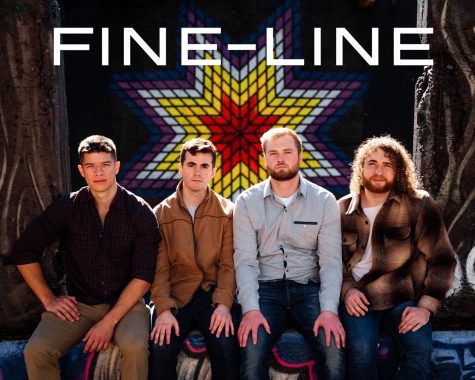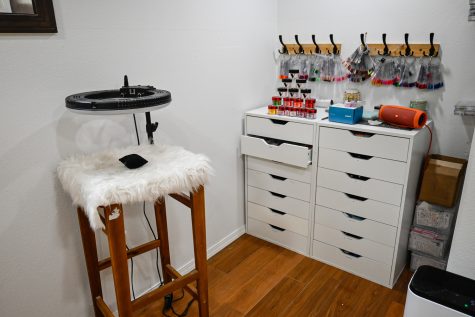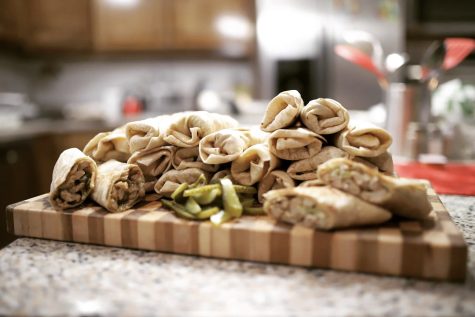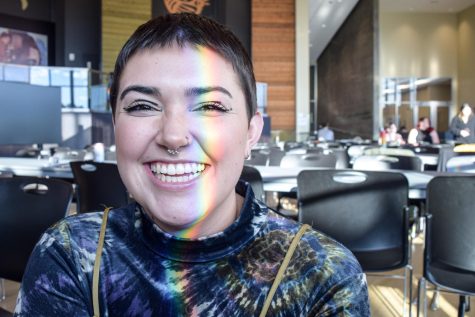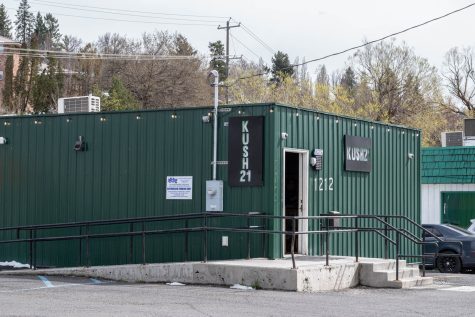Slides added to Anthropology exhibit
November 10, 2014
Slides of Celilo Falls dating back to World War II were found by pure accident in the library archives. Manuscripts, Archives & Special Collections in the Holland/Terrell Libraries recognized the slides’ importance and handed them off to Shannon Tushingham, the director of the Museum of Anthropology.
“There were 29 slides just sitting there in the corner,” Tushingham said. “They have never been published or on display before.”
Tushingham knew the photos were of the Nez Perce at Celilo Falls, so she and several students got in contact with members of the Nez Perce tribe to get the stories behind the pictures.
These slides were added to the Legacy of the Columbia River Fishery exhibit that opened earlier in the semester at the Museum of Anthropology, which focuses on the museum’s current theme of fish, water and people.
Junior environmental science major Shay Workman worked closely with Tushingham and Nez Perce Tribal member Josiah Pinkham to develop the labels for the photos.
“Josiah had lots of input on the photos,” Workman said. “He knew of stories and traditions passed down the generations, and he was also able to identify some of the people in the photos.”
With the help of Pinkham, the museum team was able to identify the woman depicted in a photo they’ve had up in the museum since the beginning of the year, Tushingham said.
Through the stories told by Pinkham and his father Allan Pinkham, everyone working on the project was able to realize the importance of Celilo Falls on local and regional tribes, and they hope to help visitors recognize this importance as well, she said.
“Celilo Falls was important not just for local tribes but also for tribes coming from far off places like California,” Workman said. “It was an important trade center as well as fishing spot.”
The story of Celilo Falls is unique in that it focuses on the entire tribe, not just the fishermen, Tushingham said.
“It’s neat because these photos have the story of the whole village,” she said. “It shows the women processing the fish, and children playing in the cable cars, in addition to the fishing itself.”
One of the most rewarding parts of this project is the collaborative effort it took, said Kyra Christiansen, an interior design senior.
“There was a lot of interdisciplinary collaboration,” she said. “Work was done by interior design students and environmental science students in addition to the normal staff.”
Not only was there collaboration with students, but there was also work being done with other departments and the Nez Perce tribe itself, Tushingham said.
“We worked really closely with the Nez Perce staff, MASC, and students to get the job done,” she said.
The exhibit shows viewers that Celilo Falls has been here for thousands of years, Tushingham said.
“I want people to understand there was a history of the area before European contact,” Workman said.
The take-away message from this new exhibit is the incredible importance of Celilo Falls, Tushingham said.
Memories of Celilo Falls will be open through the end of the 2015 spring semester. The Museum of Anthropology, on the first floor of College Hall, is open from 9 a.m. to 4 p.m. Monday through Friday. Admission is free.










